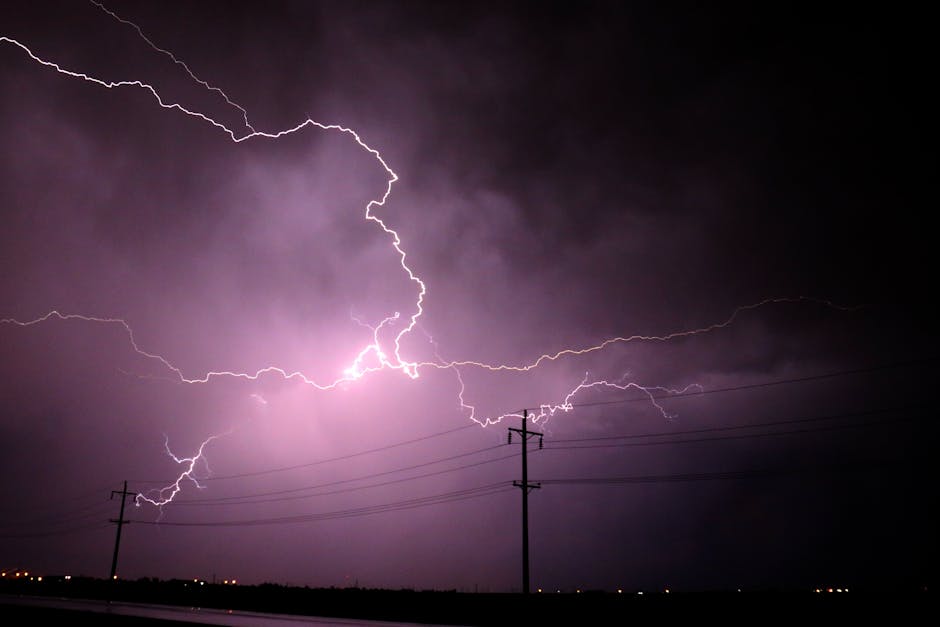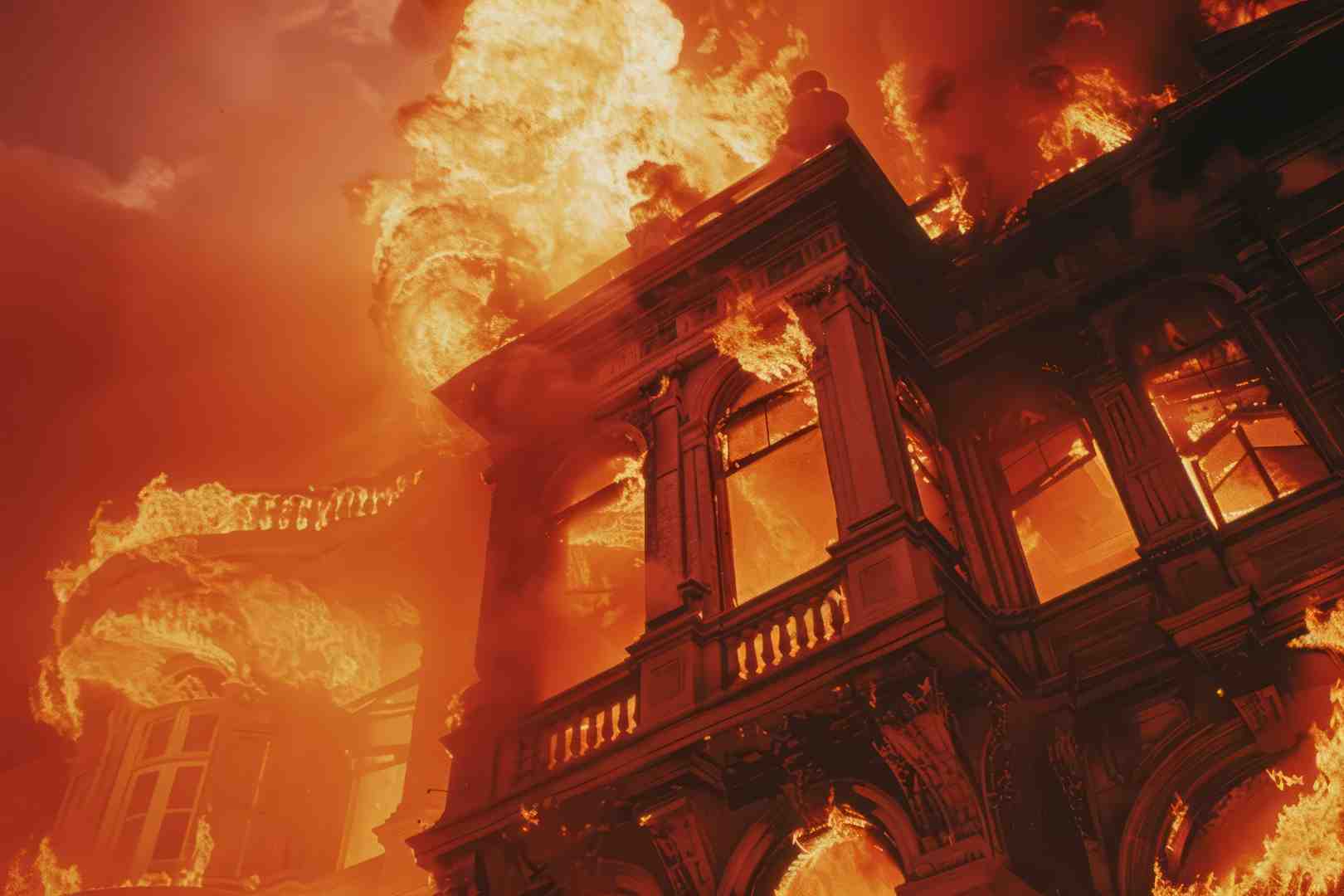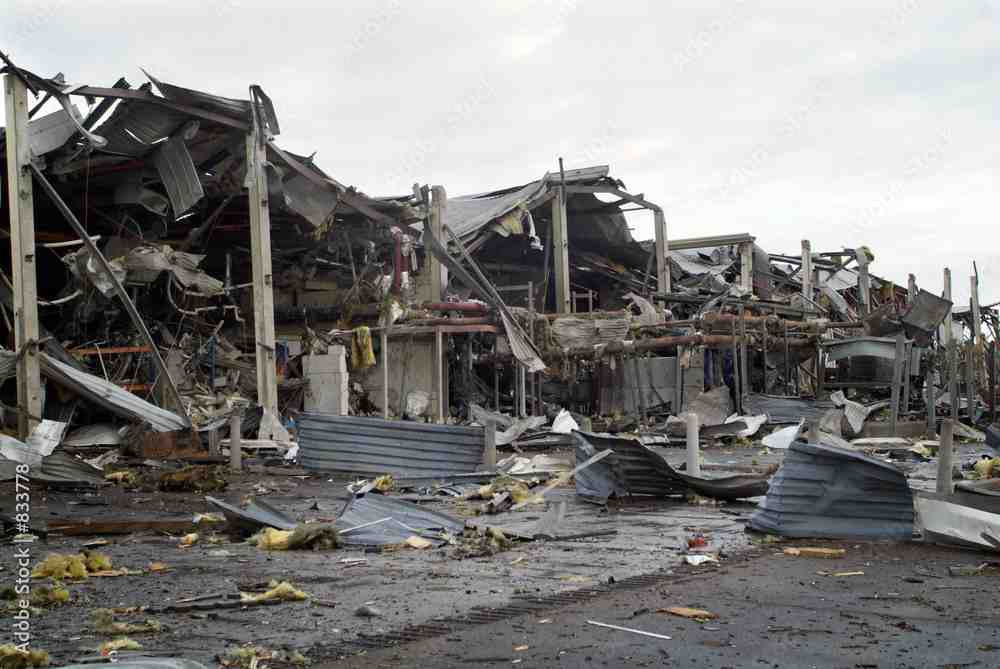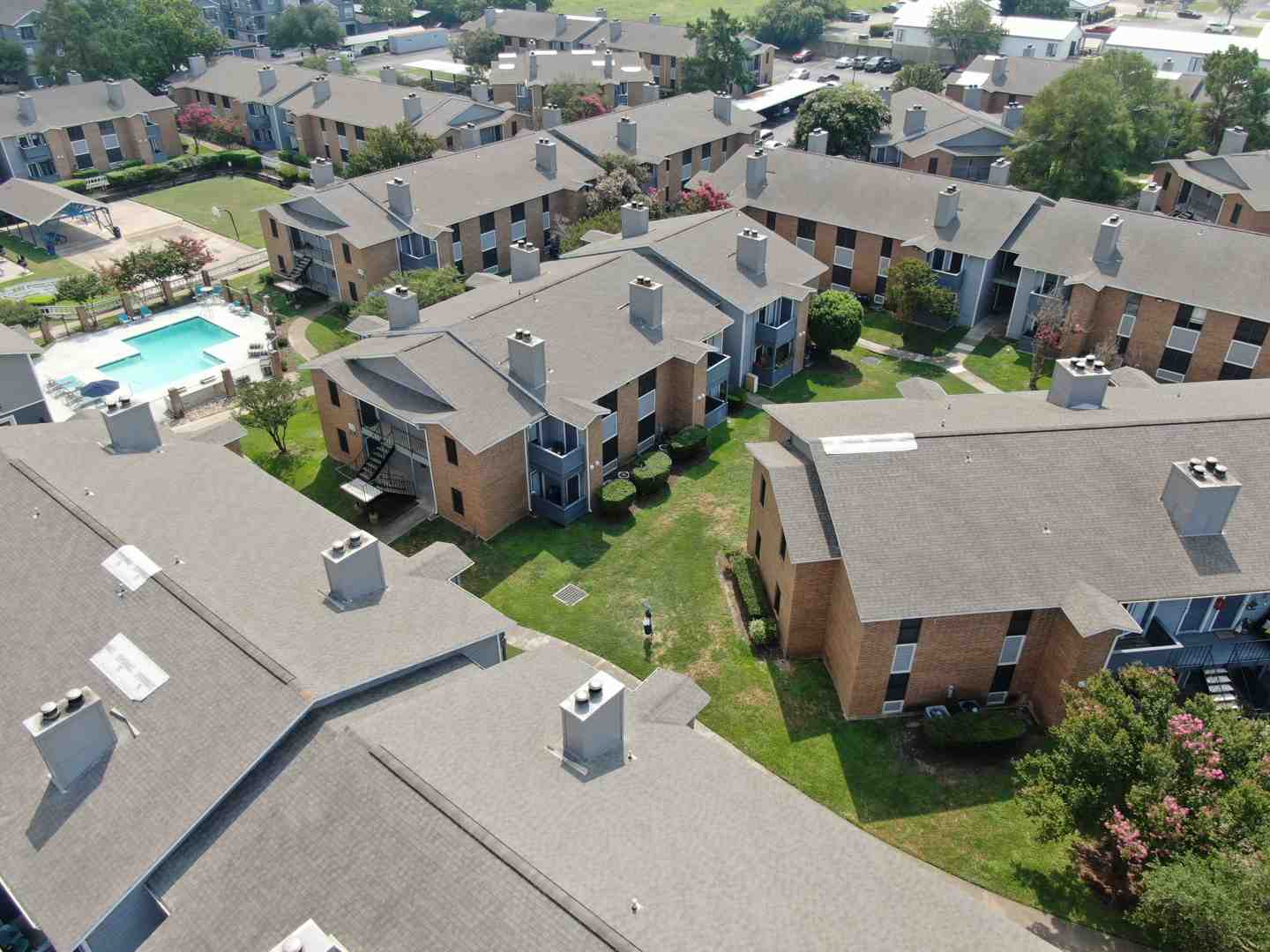Damage caused by lightning can result in a range of issues, particularly for electrical systems and the properties they are part of. Here’s a quick overview:
- Direct Strikes: Immediate physical damage, destruction of equipment, and risk of fire.
- Electromagnetic Pulses (EMP): Can disrupt and damage electronic circuits.
- Power Surges: Overload systems, leading to equipment failure.
- Secondary Effects: Indirect damage through induced currents in nearby wiring.
Lightning strikes release massive amounts of electrical energy, posing significant risks to both structures and the systems within them.
By understanding the damage caused by lightning, property owners can better prepare and mitigate potential losses. This is vital for anyone managing large properties, from hospitals and religious organizations to industrial facilities and apartment complexes.
My name is Scott Friedson, and with experience in handling damage caused by lightning, I have successfully settled large claims by maximizing recoveries for clients. This knowledge is crucial in ensuring smooth claims processes and financial protection. Let’s explore how lightning impacts properties and what can be done about it.
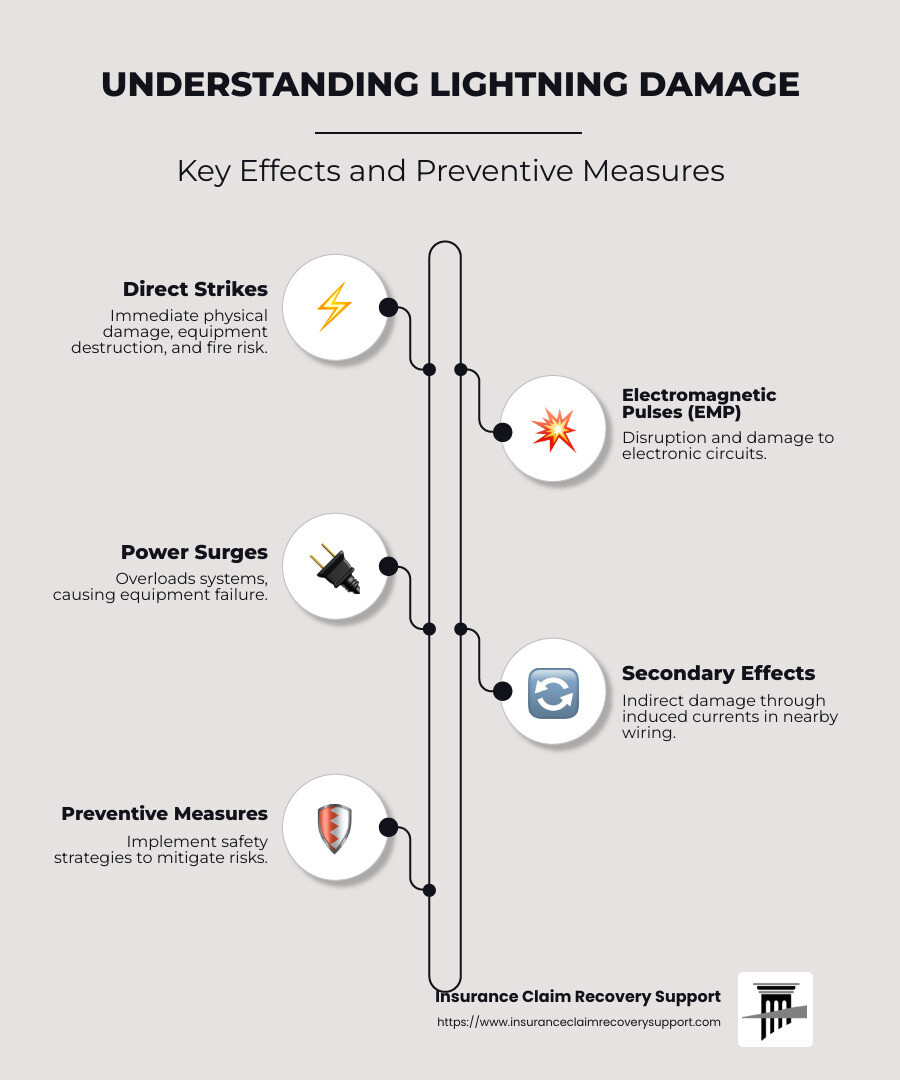
Understanding Lightning and Its Impact
Lightning is one of nature’s most powerful forces, capable of delivering a massive electrical discharge in a fraction of a second. This section will explore how lightning works and the impact it has on our world.
Lightning Mechanisms
Lightning occurs when there is a buildup of electrical charge in storm clouds. This charge can be positive or negative, and when the difference becomes large enough, a discharge occurs. This discharge is what we see as a lightning bolt.
- Cloud-to-Ground Lightning: The most familiar type, where a channel of negative charge (stepped leader) travels from the cloud to the ground.
- Intracloud Lightning: Occurs within a single cloud, often visible as sheet lightning.
- Cloud-to-Cloud Lightning: Travels between different clouds, creating stunning displays across the sky.
Each type of lightning has unique characteristics, but all share the ability to cause significant damage.
Electrical Discharge
The electrical discharge from lightning is incredibly powerful. A single strike can carry millions of volts of electricity. This immense energy can overwhelm electrical systems, leading to various types of damage caused by lightning.
- Direct Strikes: These can destroy equipment and ignite fires.
- Electromagnetic Pulses (EMP): Can disrupt sensitive electronic circuits, even in devices that are not plugged in.
- Power Surges: Can travel through power lines, damaging connected systems.
Heat Generation
Lightning is not just about electricity; it also generates intense heat. The temperature of a lightning bolt can reach up to 50,000 degrees Fahrenheit, hotter than the surface of the sun!
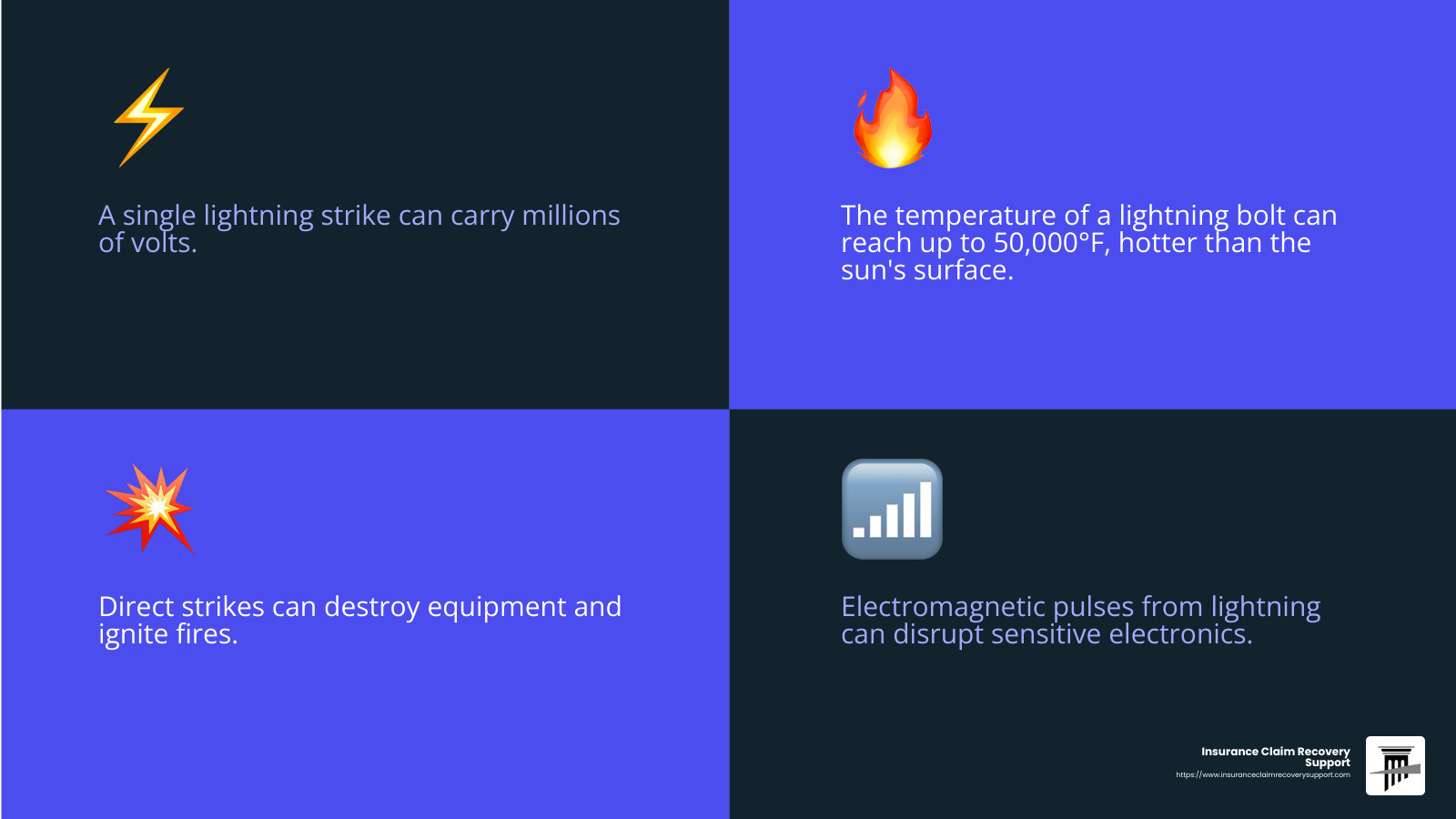
This extreme heat can melt metal, ignite fires, and cause structural damage. Buildings, trees, and other structures can suffer severe damage caused by lightning due to this intense heat.
Understanding these aspects of lightning helps property owners and managers prepare for and mitigate the risks associated with this natural phenomenon. As we dig deeper, we’ll explore the specific ways lightning affects human health and structural integrity.
Damage Caused by Lightning
Lightning can have devastating effects on both the human body and the environment. Its impact ranges from severe injuries to significant structural damage.
Effects on the Human Body
When lightning strikes, the nervous system is often the first to be affected. The intense electrical energy can cause cardiac arrest and disrupt normal heart rhythms, which can be fatal if not treated immediately.
- Brain Injuries: Lightning can lead to serious brain injuries, resulting in memory loss, seizures, or even long-term cognitive impairments.
- Respiratory Arrest: The electrical shock can also halt breathing, necessitating urgent medical intervention.
- Burns: The heat from a lightning strike can cause severe burns, both external and internal, as the current travels through the body.
Lightning injuries are rare but serious. They require immediate medical attention to prevent permanent damage or death.
Effects on Structures and Environment
Lightning doesn’t just affect humans; it poses a serious fire risk to buildings and natural environments. The extreme heat can ignite fires, which can quickly spread and cause widespread damage.
- Power Surges: Lightning strikes can cause power surges that travel through electrical systems. These surges can fry circuits and damage appliances, leading to costly repairs.
- Structural Integrity: The sheer force of a lightning strike can compromise the structural integrity of buildings. Concrete can crack, glass can shatter, and roofs can be punctured.
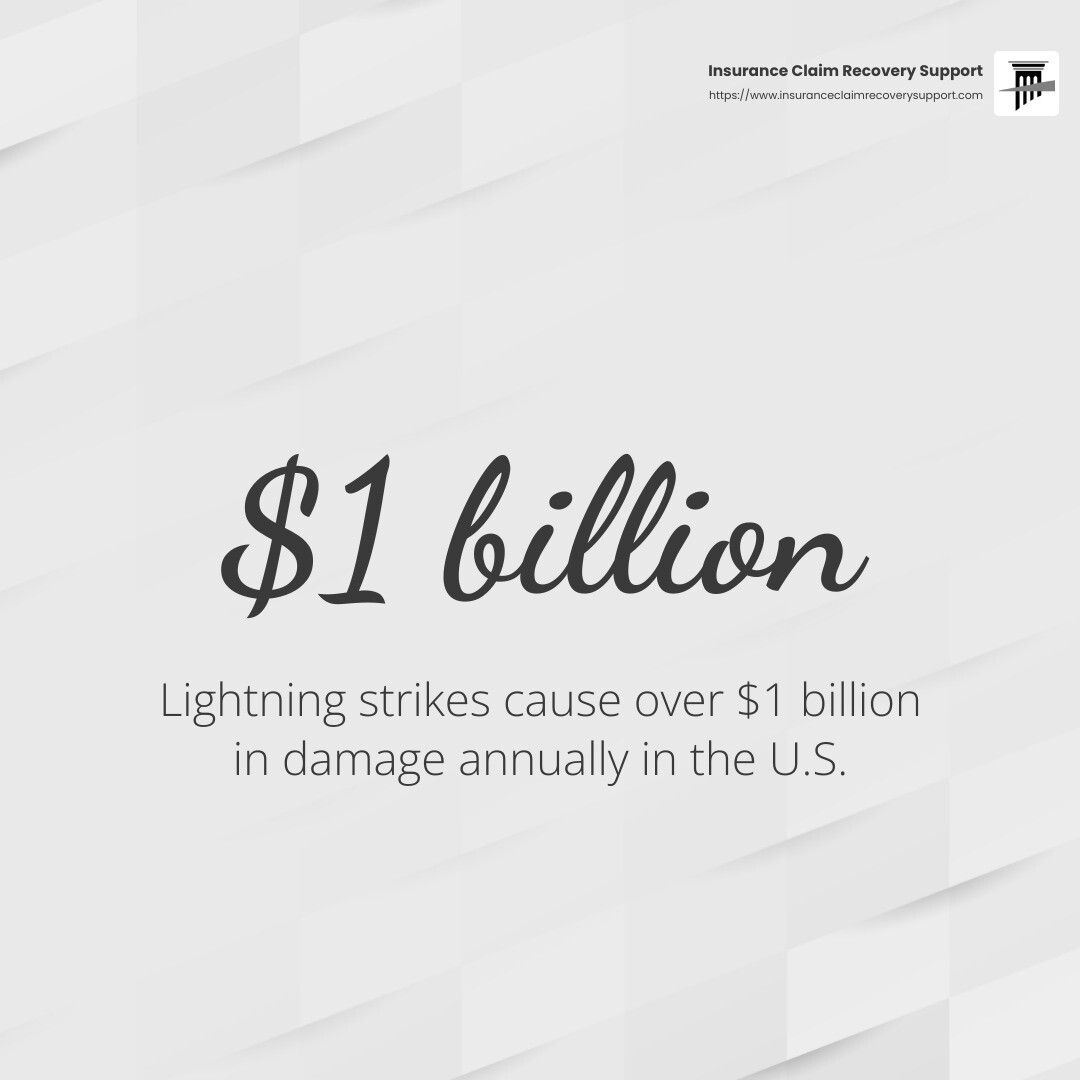
Understanding the damage caused by lightning is crucial for property owners. It highlights the importance of taking preventive measures and ensuring safety during thunderstorms.
Next, we’ll explore different types of lightning strikes and their specific consequences.
Types of Lightning Strikes and Their Consequences
Lightning strikes can occur in several forms, each with its own set of consequences. Understanding these different types can help in preparing for and mitigating the damage caused by lightning.
Direct Strikes
Direct strikes are the most dramatic and potentially devastating type of lightning strike. They occur when lightning makes direct contact with a structure, person, or object.
-
Electrical Injury: Direct strikes can cause severe electrical injuries to humans, often resulting in cardiac arrest or nerve damage. Immediate medical attention is crucial.
-
Mechanical Trauma: The sheer force of a direct strike can lead to mechanical trauma. This includes broken bones or internal injuries from being thrown by the impact.
Buildings and tall structures are particularly vulnerable to direct strikes, which can lead to fires and significant structural damage.
Side Splash and Ground Current
Side splash and ground current are less direct but still dangerous forms of lightning strikes.
-
Side Splash: This occurs when lightning strikes a taller object and jumps to a nearby person or object. It accounts for about a third of lightning injuries. The energy can cause burns or even stop the heart.
-
Ground Current: After a lightning strike, the electrical energy can travel through the ground. This is known as ground current. It can affect anyone standing nearby, causing injuries similar to those from direct strikes.
Both side splash and ground current can lead to secondary discharges or side-flashes, where the lightning’s energy redirects to nearby objects. This can cause additional damage or injuries.
Understanding these types of strikes helps in taking preventive measures, such as avoiding tall structures during a storm and staying indoors when possible.
Next, we’ll look at how to prevent lightning damage and stay safe during thunderstorms.
Preventing Lightning Damage
Lightning is a powerful force of nature, but there are ways to stay safe and reduce the damage caused by lightning. Here are some simple strategies for staying safe both indoors and outdoors.
Indoor Safety Measures
When a storm hits, staying indoors is your best bet. But even inside, you need to be careful. Here are some key tips:
-
Stay Away from Electrical Outlets: Lightning can travel through electrical systems. Avoid using wired electronics like computers or TVs. Unplug devices if possible.
-
Avoid Water Contact: Water can conduct electricity. Don’t wash dishes, take a shower, or use the sink during a storm.
-
Keep Away from Windows: Strong winds can shatter windows. Stay in interior rooms away from glass to avoid injury.
Taking these precautions can help keep you safe from indirect lightning strikes and surges that can travel through your home’s wiring and plumbing.
Outdoor Safety Measures
If you’re caught outside during a storm, it’s crucial to find shelter and adopt safe practices:
-
Avoid Tall Structures: Tall objects like trees and poles attract lightning. Move away from them to reduce your risk of being struck.
-
Find Low Ground: If no shelter is available, head for a low-lying area. Avoid open fields, hilltops, and ridges.
-
Use the Lightning Crouch: If you can’t find shelter, use the lightning crouch position. Squat down with your feet together, head tucked, and hands over your ears. This minimizes your contact with the ground.
By following these indoor and outdoor safety measures, you can significantly reduce your risk of injury or damage during a thunderstorm.
Next, we’ll explore some frequently asked questions about lightning damage to provide further clarity on the topic.
Frequently Asked Questions about Lightning Damage
What are the common injuries caused by lightning?
Lightning strikes can cause a range of injuries to the human body. The most severe include muscle pains, cardiac arrest, and hearing loss. When lightning strikes, the electrical discharge can lead to muscle spasms and severe pain. In some cases, the heart may stop beating, leading to cardiac arrest. Additionally, the loud thunder accompanying a strike can damage hearing, resulting in temporary or permanent loss.
How does lightning cause structural damage?
Lightning is not just a threat to people; it can also cause significant structural damage. When lightning hits a building, the intense heat can spark a fire. This is especially true if the strike ignites flammable materials. Furthermore, the electrical surge can cause power faults that damage wiring and connected devices. The heat from a strike can also cause metal heating, leading to warping or melting of metal structures.
What are the odds of being struck by lightning?
The odds of being struck by lightning in a given year are relatively low. In the United States, the annual odds of being struck are about 1 in 1,222,000. However, over a lifetime, the odds increase to about 1 in 15,300. While these numbers may seem small, taking preventive measures can further reduce the risk of injury or damage from lightning.
By understanding these aspects of lightning damage, you can better prepare and protect yourself and your property during thunderstorms.
Conclusion
At Insurance Claim Recovery Support, we understand how overwhelming the aftermath of a lightning strike can be. That’s why we’re dedicated to advocating for policyholders every step of the way. Our primary goal is to ensure you receive the maximum settlement possible for the damage caused by lightning.
Lightning strikes can lead to complex claims, from structural damage to intricate electrical issues. Navigating these claims requires expertise and attention to detail. As public insurance adjusters, we specialize in representing policyholders—not insurance companies—ensuring that your interests are front and center.
Why Choose Us?
-
Expert Advocacy: We stand by your side, making sure your voice is heard and your claim is strong. Our experience in dealing with insurance policies helps us argue for a settlement that truly reflects the extent of your loss.
-
Comprehensive Assessment: We carefully assess the damage, identifying both immediate and latent effects of a lightning strike. This thorough approach ensures no aspect of your claim is overlooked.
-
Empowering Policyholders: We believe in empowering you with knowledge. Understanding your policy and the claims process can make a significant difference in achieving a successful outcome.
If you’re dealing with the aftermath of a lightning strike, you’re not alone. Let us help you steer the storm and secure the settlement you deserve. For more information on how we can assist with your lightning insurance claim, visit our service page.
Together, we can turn a challenging situation into a successfully resolved claim, ensuring that your property is restored and your financial interests are protected. Trust us to be your advocates in navigating the storm.

